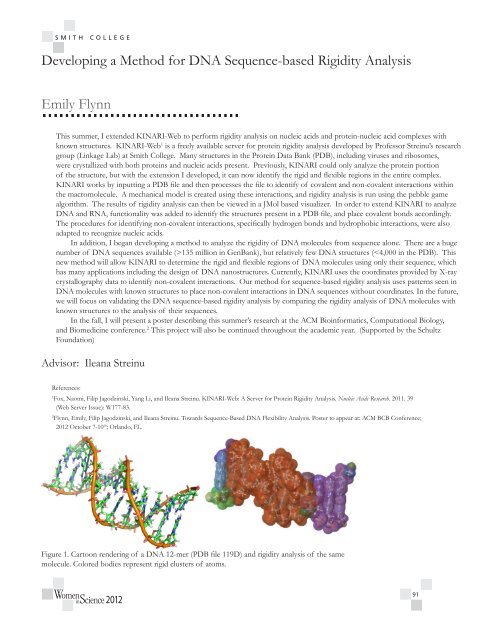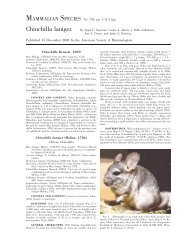Brugia Malayi - Clark Science Center - Smith College
Brugia Malayi - Clark Science Center - Smith College
Brugia Malayi - Clark Science Center - Smith College
Create successful ePaper yourself
Turn your PDF publications into a flip-book with our unique Google optimized e-Paper software.
Developing a Method for DNA Sequence-based Rigidity Analysis<br />
Emily Flynn<br />
This summer, I extended KINARI-Web to perform rigidity analysis on nucleic acids and protein-nucleic acid complexes with<br />
known structures. KINARI-Web 1 is a freely available server for protein rigidity analysis developed by Professor Streinu’s research<br />
group (Linkage Lab) at <strong>Smith</strong> <strong>College</strong>. Many structures in the Protein Data Bank (PDB), including viruses and ribosomes,<br />
were crystallized with both proteins and nucleic acids present. Previously, KINARI could only analyze the protein portion<br />
of the structure, but with the extension I developed, it can now identify the rigid and flexible regions in the entire complex.<br />
KINARI works by inputting a PDB file and then processes the file to identify of covalent and non-covalent interactions within<br />
the macromolecule. A mechanical model is created using these interactions, and rigidity analysis is run using the pebble game<br />
algorithm. The results of rigidity analysis can then be viewed in a JMol based visualizer. In order to extend KINARI to analyze<br />
DNA and RNA, functionality was added to identify the structures present in a PDB file, and place covalent bonds accordingly.<br />
The procedures for identifying non-covalent interactions, specifically hydrogen bonds and hydrophobic interactions, were also<br />
adapted to recognize nucleic acids.<br />
In addition, I began developing a method to analyze the rigidity of DNA molecules from sequence alone. There are a huge<br />
number of DNA sequences available (>135 million in GenBank), but relatively few DNA structures (

















